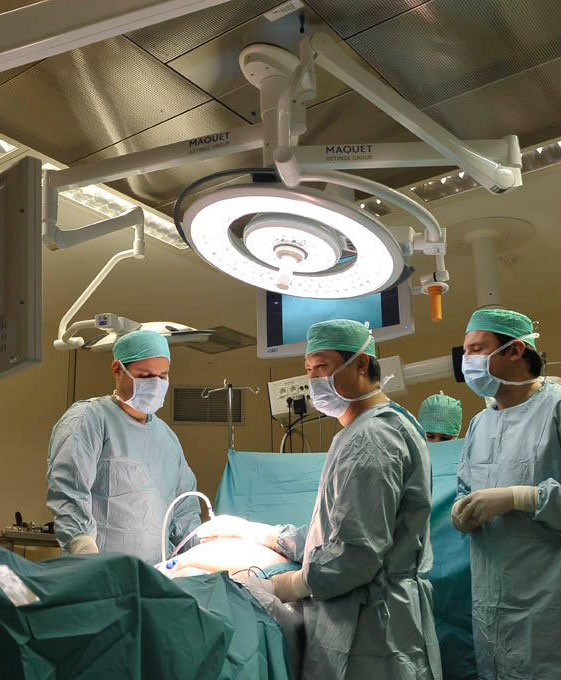What Is Chronic Pelvic Pain?
Chronic pelvic pain (CPP) is defined as pain in the lower abdomen or pelvic region that lasts for six months or longer. It can range from dull and constant to sharp and intermittent, and may be linked to other symptoms affecting the urinary, reproductive, or digestive systems. While often associated with women, CPP affects all genders and can severely impact quality of life.
Definition & Medical Criteria
CPP is typically considered when pain persists beyond normal healing time and is not explained by an identifiable condition—or persists after treatment of a known cause. It can be a symptom of another disease or a standalone pain disorder.
Difference Between Chronic and Acute Pelvic Pain
Acute pelvic pain appears suddenly and is often caused by infections or trauma. Chronic pelvic pain is ongoing, often multifactorial, and requires a comprehensive diagnostic approach.
When Should You Seek Help?
If your pelvic pain lasts more than a few weeks, disrupts your daily life, or is accompanied by other symptoms like numbness, bowel/bladder changes, or sexual dysfunction—it’s time to seek specialist care.
Common Symptoms of Chronic Pelvic Pain
✔ Persistent or recurring pain in the lower abdomen or pelvis
✔ Burning, aching, or stabbing sensations
✔ Pain while sitting or after prolonged activity
✔ Numbness, tingling, or hypersensitivity in the genital or rectal area
✔ Pain during or after intercourse
✔ Constipation, urgency, or urinary frequency
✔ Sleep disturbances and chronic fatigue
✔ Emotional distress: anxiety, depression, or irritability
These symptoms can fluctuate with stress, posture, menstrual cycle, or physical activity. In many cases, they overlap with pudendal neuralgia or pelvic nerve entrapment.
Possible Causes of Chronic Pelvic Pain
Chronic pelvic pain is often multifactorial. Understanding the underlying cause is critical for effective treatment.
Pudendal Neuralgia and Nerve Entrapment
Compression or irritation of the pudendal nerve can cause burning, stabbing, or numb pain, especially when sitting.
Endometriosis, Adenomyosis or Fibroids
Tissue growth outside the uterus can cause cyclical pain, especially during menstruation or intercourse.
Interstitial Cystitis / Bladder Pain Syndrome
This chronic bladder condition causes pelvic pressure, urgency, and pain during urination.
Pelvic Floor Muscle Dysfunction
Tight or imbalanced pelvic floor muscles can cause pain, especially during bowel movements or intercourse.
Surgical Scars, Mesh, or Nerve Damage
Previous surgeries (e.g., hernia repair, hysterectomy) can cause adhesions or nerve injury.
Postpartum or Post-Trauma Changes
Pregnancy, childbirth, or physical trauma may lead to long-term pelvic pain syndromes.
Idiopathic / Unknown Causes
In some cases, no clear cause is found, but effective treatment is still possible.
Treatment Options for Chronic Pelvic Pain
Your treatment plan depends on your diagnosis, history, and symptom profile.
Conservative Treatments
These include pelvic floor physiotherapy, anti-inflammatory medications, neuropathic pain meds, and muscle relaxants.
Nerve Blocks & Injections
Pudendal nerve blocks can be both diagnostic and therapeutic.
Psychological Support & Pain Management Programs
Chronic pain often requires support for associated stress, anxiety, and depression.
Advanced Surgery – Pudendal Nerve Decompression
For patients with pudendal nerve entrapment, decompression surgery can provide lasting relief by removing the pressure on the nerve.
When Surgery Is the Best Option
Surgery is considered when conservative treatments fail or nerve entrapment is confirmed through clinical evaluation and imaging.
Why Choose Us?
My life was put on hold for years until I found this team. Now I’m pain-free and working again.
World-leading expertise in pudendal nerve decompression surgery
Focus on cause-based treatment rather than symptom masking
Personalized diagnosis using nerve mapping and high-resolution MRI
Multilingual team with global experience
Trusted by patients from over 35 countries
Diagnosis – How Chronic Pelvic Pain is Evaluated
Diagnosing CPP requires a multidisciplinary, methodical approach.
Medical History & Symptom Mapping: Understanding the timeline, triggers, and severity of symptoms is key.
Physical and Neurological Examination: Palpation of pelvic floor muscles and nerve pathways helps identify musculoskeletal or neurological origins.
MRI, Ultrasound & Diagnostic Nerve Blocks: Imaging can reveal structural abnormalities. Targeted nerve blocks help confirm nerve involvement.
Exclusion of Gynecological, Urological, and Gastrointestinal Conditions: Conditions like endometriosis, IBS, or interstitial cystitis must be ruled out or treated.
Multidisciplinary Assessment: At PudendalSurgery.com, neurologists, surgeons, radiologists, and physiotherapists collaborate on your diagnosis.


Can Chronic Pelvic Pain Go Away on Its Own?
Sometimes, yes—but long-lasting pain should never be ignored.
What If All My Scans Are Normal?
Nerve pain often doesn’t show up on standard imaging. That’s why nerve-specific exams are critical.
Is Pudendal Neuralgia a Rare Condition?
It’s underdiagnosed, not rare. Awareness is growing.
What Results Can I Expect from Surgery?
Many patients experience significant or complete relief. Outcomes depend on accurate diagnosis and timing.
How Soon Can I Go Back to Work or Exercise?
Most patients return to light activity within weeks. Full recovery takes 3–6 months.
Book a Consultation
It’s time to stop calling it prostatitis when it’s not. It’s time to stop treating symptoms. It’s time to be free from pain.
Why Patients Choose Us:
World-class surgical expertise
Led by Dr. Renaud Bollens, a pioneer in pudendal nerve decompression.
Root-cause diagnostics
We go beyond symptoms to identify if your pain is actually nerve-related.
Hope after failed treatments
We help patients who’ve tried everything else — and finally find answers.
